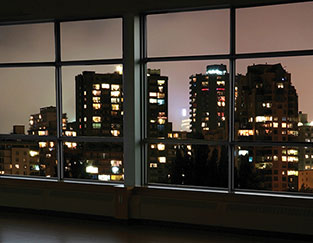
Testing the Safety of Polished Floors
ASTM Committee D21 Marks 50th Anniversary of Standard D2047
Whether in an office building or on a basketball court, the safety of a polished floor is crucial to those walking, running or playing on it. Since 1964, ASTM International Committee D21 on Polishes has significantly contributed to floor safety through ASTM D2047, Test Method for Static Coefficient of Friction of Polish-Coated Flooring Surfaces as Measured by the James Machine. D2047 is the only currently used and accepted standard that has a numerical value that polished floors must meet or exceed in order to be in compliance.
D2047, developed by Subcommittee D21.06 on Slip Resistance, is primarily used by floor polish manufacturers, polish specifiers and end users. The roots of D2047 can be traced to the late 1930s and Sidney James of Underwriters Laboratories, the inventor of the machine used in this standard. The impetus for this standard was provided by the U.S. General Services Administration, the world's largest purchaser of polishes in the late 1940s.
D2047 is unique among slip standards in that it provides a compliance criterion for whether a tested polish film will provide a safe walkway surface and whether the term "slip resistant" can be applied to a polish. The compliance criterion is based on a correlation of polish friction data from D2047 with the pedestrian experience of billions of passes over millions and millions of square feet of polished floors from 1942 through the mid-1970s. The experiential data was collected by an independent accounting firm for the Chemical Specialties Manufacturers Association. They found that if a polish produced a value of 0.5, or higher, when measured by D2047, no pedestrian slip incidents that could be attributed to the polish occurred. Later, the U.S. Federal Trade Commission (congressionally mandated to resolve conflicting advertising claims for "slip resistant" polishes) ruled that only polishes that passed the compliance criterion of D2047 could be termed as slip resistant.
The James machine was designed to measure the static coefficient of friction of an interface of a dried polish film in contact with a specification leather sensor. Since friction is not a property of a surface but of an interface, holding one surface of the interface (the specification leather) constant will provide a measure of the friction contribution of various polish surfaces to the interface. This method does this with a high degree of repeatability and reproducibility, as shown in ASTM Research Report RR: D21-1000.
The polish data generated by D2047 is the only data that has been correlated with extensive pedestrian experience, and so it is the only data for which the compliance criterion is valid. The substitution of a different sensor for the specification leather, changing the machine design to measure the dynamic coefficient of friction, or contaminating the frictional interface with water or other substance, will produce data from a different interface than that of D2047, so the correlation of the conformance criterion of D2047 no longer exists.
While conformance with D2047 and its compliance criterion is a primary requirement for polished floor safety, regular, routine maintenance is also an important part of pedestrian safety. "All floor surfaces can become dangerous when they become contaminated or wet, or are not maintained as prescribed by the polish manufacturer," notes Alan Ruzicka, president, Westside Engineering, Malibu, California, and chairman of Committee D21. "This maintenance requirement applies to all of the polished indoor floorings substrates of D2047, including vinyl composition, wood, terrazzo, vinyl, marble urethanes, concrete and ceramics.
With more than a half-century of consistently predictable and accurate testing results behind it, the ASTM D2047 standard continues to be the go-to standard for the floor polish industry, including their manufacturers, material suppliers and all users of floor polish.
 SN Home
SN Home Archive
Archive Advertisers
Advertisers Masthead
Masthead RateCard
RateCard Subscribe
Subscribe Email Editor
Email Editor